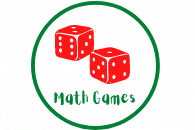Pythagorean Theorem Word Problems Worksheet with Answers
Understanding the Pythagorean Theorem is crucial in geometry and real-world applications. It provides a fundamental relationship between the sides of a right-angled triangle. In this article, we will explore various word problems related to the Pythagorean Theorem and provide detailed solutions. See word problems below >>>
- Pythagorean Theorem with triangles 1
- Pythagorean Theorem with triangles 2
- Pythagorean Theorem with triangles 3
- Pythagorean Theorem with triangles 4
- Pythagorean Theorem with triangles 5
- Pythagorean Theorem with triangles 6
- Pythagorean Theorem with triangles 7
Preschool Worksheets

Preschool Math Worksheets - Counting, Addition, Subtraction, Geometry, & More. Colorful printable math tests.
Go to pageKindergarten Worksheets

Kindergarten Math worksheets- Addition, Subtraction, Probability, ,Fractions & More. Free math worksheets
Go to page1st Grade Worksheets

1st First Grade Math Worksheets - Counting, Addition, Geometry, Positions & More. First grade math worksheets
Go to page2nd Grade Worksheets

2nd Second Grade Math worksheets- Counting, Addition, Subtraction, Geometry, Positions & More. Grade 2 worksheets
Go to page3rd Grade Worksheets

3rd Third Grade Math Worksheets - Counting, Addition, Subtraction, Geometry, Positions & More. Grade 3 worksheets pdf
Go to page4th Grade Worksheets

4th Fourth Grade Math worksheets- Counting, Addition, Subtraction, Geometry, Positions & More. grade 4 math worksheets
Go to page5th Grade Worksheets

5th Fifth Grade Math Worksheets - Counting, Addition, Subtraction, Geometry, Positions & More. grade 5 math worksheets
Go to page6th Grade Worksheets

6th Sixth Grade Math Worksheets - Counting, Addition, Subtraction, Geometry, Positions & More. Grade 6 math worksheets
Go to page7th Grade Worksheets

7th Seventh Grade Math Worksheets - Addition, Subtraction, Geometry, Positions & More. Grade 7 math worksheets
Go to pageWhat is the Pythagorean Theorem?
The Pythagorean Theorem states that in a right-angled triangle, the square of the hypotenuse (the side opposite the right angle) is equal to the sum of the squares of the other two sides. It can be represented as:
In an equation: c² = a² + b²
Where: c = length of the hypotenuse a and b = lengths of the other two sides (legs)
Solving Basic Pythagorean Word Problems
Using the Theorem to Find the Hypotenuse
One common application of the Pythagorean Theorem is to find the length of the hypotenuse when the lengths of the other two sides are known. Let's consider the following example:
Example: Tom is building a ramp for his pet dog. The ramp's horizontal distance (base) is 5 meters, and its vertical height (height) is 3 meters. What is the length of the ramp (hypotenuse)?
Solution: We can use the Pythagorean Theorem to find the hypotenuse. c² = a² + b² c² = 5² + 3² c² = 25 + 9 c² = 34 c = √34 ≈ 5.83 meters
Using the Theorem to Find the Missing Side
Another application is to find the length of one of the sides when the hypotenuse and one side are known. Let's look at an example:
Example: Jennifer wants to put up a diagonal beam across a rectangular window. The width of the window is 8 feet, and the length of the beam (hypotenuse) is 10 feet. What is the height of the window, represented by 'h' in the diagram?
Solution: We can use the Pythagorean Theorem to find the height. c² = a² + b² 10² = 8² + h² 100 = 64 + h² h² = 100 - 64 h² = 36 h = √36 = 6 feet
Applying the Pythagorean Theorem in Real Life
Calculating Distance Between Two Points
The Pythagorean Theorem is widely used to find the distance between two points in a two-dimensional plane. For instance:
Example: Alice and Bob are camping in a forest. Alice's tent is located at point A (4, 3), and Bob's tent is at point B (7, 9). What is the distance between their tents?
Solution: We can use the distance formula and the Pythagorean Theorem to find the distance between the two points. Distance = √((x₂ - x₁)² + (y₂ - y₁)²) Distance = √((7 - 4)² + (9 - 3)²) Distance = √(3² + 6²) Distance = √(9 + 36) Distance = √45 ≈ 6.71 units
Determining the Height of a Building
The Pythagorean Theorem can also help us determine the height of a tall object like a building when it is not directly measurable. Consider this scenario:
Example: Bill wants to know the height of a flagpole. He measures the distance from the base of the flagpole to a point C, which is 20 meters away. He then measures the angle of elevation from C to the top of the flagpole, which is 60 degrees. What is the height of the flagpole?
Solution: We can use trigonometry and the Pythagorean Theorem to find the height. Height = Distance × tan(angle of elevation) Height = 20 × tan(60 degrees) Height = 20 × √3 ≈ 34.64 meters
Advanced Pythagorean Word Problems
The Ladder Problem
One classical Pythagorean problem involves a ladder leaning against a wall. Consider this scenario:
Example: Mary places a ladder against a wall. The ladder is 12 feet long, and the base of the ladder is 5 feet away from the wall. What is the height at which the ladder touches the wall?
Solution: By using the Pythagorean Theorem, we can find the height where the ladder touches the wall. c² = a² + b² 12² = 5² + b² 144 = 25 + b² b² = 144 - 25 b² = 119 b = √119 ≈ 10.91 feet
The Fence Problem
Suppose you want to enclose a rectangular garden with a fence, and you need to find the length of the fence required. Here's an example:
Example: Samantha wants to build a rectangular fence around her garden. The length and width of the garden are 15 feet and 8 feet, respectively. What is the length of the fence she needs to enclose the garden?
Solution: By applying the Pythagorean Theorem, we can determine the length of the fence required. c² = a² + b² c² = 15² + 8² c² = 225 + 64 c² = 289 c = √289 = 17 feet
The Diagonal Problem
In some situations, you might need to find the diagonal of a rectangle using the Pythagorean Theorem. For example:
Example: John wants to buy a new television for his living room. The dimensions of the TV are 32 inches in length and 24 inches in width. What is the diagonal size of the TV?
Solution: Using the Pythagorean Theorem, we can find the diagonal size. c² = a² + b² c² = 32² + 24² c² = 1024 + 576 c² = 1600 c = √1600 = 40 inches
Using the Pythagorean Theorem to Solve 3D Problems
The Pythagorean Theorem can also be extended to three-dimensional problems involving right-angled triangles. Consider this example:
Example: Chris wants to construct a pyramid with a square base. The base edges of the pyramid are 10 feet each, and the height of the pyramid is 8 feet. What is the length of the inclined edge (slant height) of the pyramid?
Solution: By using the Pythagorean Theorem in 3D, we can find the slant height of the pyramid. c² = a² + b² + h² c² = 10² + 10² + 8² c² = 100 + 100 + 64 c² = 264 c = √264 ≈ 16.25 feet
Challenging Word Problems with Multiple Right-Angled Triangles
In more complex scenarios, you may encounter word problems with multiple right-angled triangles involved. Here's a challenging example:
Example: A large field is divided into three smaller rectangular sections. The lengths and widths of the sections are as follows: Section A (10 m × 5 m), Section B (8 m × 6 m), and Section C (12 m × 4 m). Is the intersection point of the diagonals equidistant from each section's center?
Solution: To determine if the intersection point of the diagonals is equidistant, we need to apply the Pythagorean Theorem to each section.
For Section A: c² = a² + b² c² = 10² + 5² c² = 100 + 25 c² = 125 c = √125 ≈ 11.18 meters
For Section B: c² = a² + b² c² = 8² + 6² c² = 64 + 36 c² = 100 c = √100 = 10 meters
For Section C: c² = a² + b² c² = 12² + 4² c² = 144 + 16 c² = 160 c = √160 ≈ 12.65 meters
Since the calculated distances are not equal, the intersection point is not equidistant from each section's center.
Using the Converse of the Pythagorean Theorem
The Pythagorean Theorem can be reversed to verify if a triangle is a right-angled triangle. The converse states that if the square of the longest side of a triangle is equal to the sum of the squares of the other two sides, then the triangle is a right-angled triangle.
Pythagorean Triplets
Pythagorean Triplets are sets of three positive integers that satisfy the Pythagorean Theorem. Common triplets include (3, 4, 5), (5, 12, 13), and (8, 15, 17).
Proofs and History of the Pythagorean Theorem
The Pythagorean Theorem has a rich history and has been proven in various ways throughout time. It was named after the ancient Greek mathematician Pythagoras.
Common Mistakes to Avoid
When dealing with Pythagorean word problems, there are some common errors that students tend to make. Being aware of these mistakes can help avoid them and arrive at the correct solution.
Tips and Tricks for Quick Problem Solving
Here are some tips and tricks to enhance your problem-solving skills when dealing with Pythagorean word problems.
Conclusion
In conclusion, the Pythagorean Theorem is a fundamental concept in geometry with numerous applications in real life. Understanding and mastering the theorem can greatly benefit individuals in various fields.
FAQs
-
What is the Pythagorean Theorem used for? The Pythagorean Theorem is primarily used to find the length of the sides of a right-angled triangle and solve related geometric problems.
-
Can the Pythagorean Theorem be applied to three-dimensional problems? Yes, the Pythagorean Theorem can be extended to solve problems involving right-angled triangles in three-dimensional space.
-
Who discovered the Pythagorean Theorem? The Pythagorean Theorem is attributed to the ancient Greek mathematician Pythagoras.
-
Are there other methods to prove the Pythagorean Theorem? Yes, there are multiple proofs of the Pythagorean Theorem, including geometric, algebraic, and even visual proofs.
-
Why is the Pythagorean Theorem important in real life? The theorem finds applications in various fields, such as architecture, engineering, astronomy, and navigation, making it a vital tool in problem-solving.
![]() 8th Eight Grade Math Worksheets - Polynomials, Algebra, Geometry, Pythagorean Theory, & more
8th Eight Grade Math Worksheets - Polynomials, Algebra, Geometry, Pythagorean Theory, & more
![]() Coloring and Arts - Printable coloring worksheets for kids - Pre K to 6 th grade
Coloring and Arts - Printable coloring worksheets for kids - Pre K to 6 th grade
![]() Math Puzzles in PDF Printable Format - Secret trails, Across downs, Number Patterns & more
Math Puzzles in PDF Printable Format - Secret trails, Across downs, Number Patterns & more
![]() Math Board Games in PDF Printable Format - Zombie, Crocodile, Football, Pirate games & more
Math Board Games in PDF Printable Format - Zombie, Crocodile, Football, Pirate games & more
 This exercise will help kids practice Math in a fun way. Kids related to games very well. From preschool / kindergarten to sixth grade levels of math games. There are games for the following topics:
This exercise will help kids practice Math in a fun way. Kids related to games very well. From preschool / kindergarten to sixth grade levels of math games. There are games for the following topics:
The games include among other : memory games, Walk the plank, Fling the Teacher, En Garde Duel, Basketball Game, Penalty Shoot and more.
